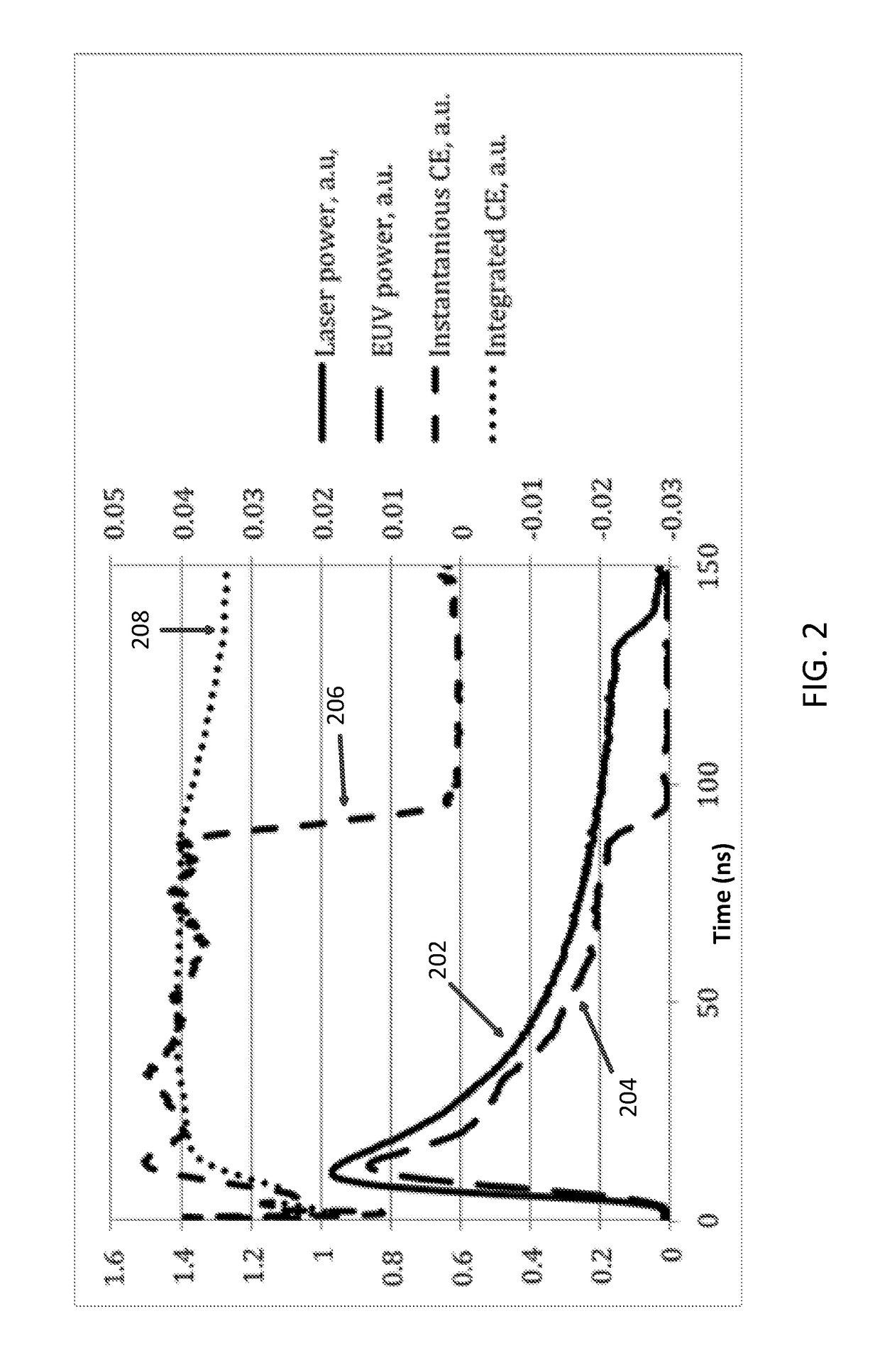EUV LPP source with dose control and laser stabilization using variable width laser pulses
a laser pulse and euv light source technology, applied in the field of laser produced plasma (lpp) extreme ultraviolet (euv) light source, can solve the problems of resolution limit, energy that might have been generated by a droplet that is skipped, waste of energy, etc., and achieve the effect of improving the control of a dose of euv radiation and uniform amount of energy
- Summary
- Abstract
- Description
- Claims
- Application Information
AI Technical Summary
Benefits of technology
Problems solved by technology
Method used
Image
Examples
Embodiment Construction
[0027]The present application describes a method and apparatus for improving the control of a dose of EUV radiation generated by a laser produced plasma (LPP) extreme ultraviolet (EUV) light source and to be applied to an item, such as a semiconductor wafer, being processed, while providing for extraction of a uniform amount of energy from the laser gain medium.
[0028]In one embodiment, a variation of pulse control mode is used in which the duration of each pulse (also often called the pulse width) from the source laser is extended or lengthened, rather than shortened as in the prior art. A pulse width of extended duration is produced, for example, by an EOM, that will extract a portion of the energy from the power amplifier. The duration of the pulse width is selected so as to extract a suitable and uniform amount of the energy in the source laser gain medium (power amplifier) with each pulse. For example, in one embodiment the amount of energy extracted with each pulse is sufficien...
PUM
 Login to View More
Login to View More Abstract
Description
Claims
Application Information
 Login to View More
Login to View More - R&D
- Intellectual Property
- Life Sciences
- Materials
- Tech Scout
- Unparalleled Data Quality
- Higher Quality Content
- 60% Fewer Hallucinations
Browse by: Latest US Patents, China's latest patents, Technical Efficacy Thesaurus, Application Domain, Technology Topic, Popular Technical Reports.
© 2025 PatSnap. All rights reserved.Legal|Privacy policy|Modern Slavery Act Transparency Statement|Sitemap|About US| Contact US: help@patsnap.com



